The 2021 Ford Mustang Mach 1 made a solid first impression last year at the Streets of Willow, so when we were offered the opportunity to sample it again in the real world, we didn’t hesitate. And because one Mach 1 isn't enough to fully test its talents, we tried two.
This newest incarnation of the Mach 1 is a hybrid of two, now-departed Mustang nameplates: Bullitt and Shelby GT350. From the Bullitt, it inherited the hotter version of Ford’s 5.0-liter Coyote V8. From the Shelby, it picked up the sturdy Tremec six-speed manual gearbox. Some of the GT350’s performance-oriented suspension and interior modifications were absorbed into the Mach 1 too – or at least made available as options.
The result is a Mustang GT turned up to 11. The V8 produces 480 horsepower and 420 pound-feet of torque (and sounds great doing it). In addition to the big, six-piston Brembos, sticky tires and chassis/suspension upgrades inherited from the GT Performance package, the standard Mach 1’s aero produces 22% more downforce. The Mach 1 Handling Package bumps that to 150%, while also bringing along a few greatest hits from the old GT350 R package. Among them a rear-seat delete and a set of Michelin Pilot Sport Cup 2s. It carries a $3,750 price tag.
As mentioned, we sampled a pair of Mach 1s, one with this key package and one without. The car with the Handling package also had the six-speed manual, snug Recaro optional seats and rear-seat delete option. It went to me in Michigan. The other, with a 10-speed automatic, base Mustang seats at all corners and no Handling package, went to Senior Editor James Riswick in Oregon. Both were Premium models with the Elite package painted Fighter Jet Gray, so their equipment was otherwise pretty much identical.

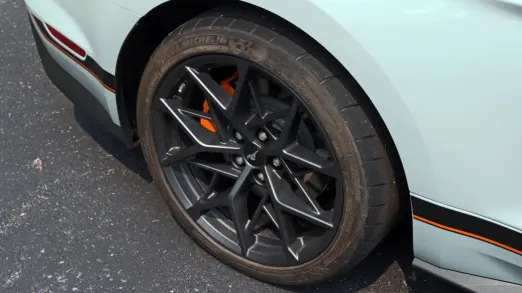
Mach 1 No. 1: Handling package, Recaro Seats
Hurd: I was a huge fan of the GT350 (R or otherwise) and had high hopes for the Mach 1. I briefly owned a 2015 Mustang GT with the Performance package and Recaro seats ($36,000 in 2015; can you believe that?) and absolutely adored it, but that was before Chevy introduced the Alpha-platform Camaro in 2016 and upped the ante in the pony car game.
One of the Blue Oval’s key counterpunches was the introduction of MagneRide – Ford’s version of the magnetorheological adaptive damper system that was once exclusive to GM, but has since been made available to manufacturers worldwide. Ford introduced MagneRide on the GT350 in 2015 before letting it trickle down to the GT and the EcoBoost High Performance Package with the Mustang’s 2018 refresh.
Ostensibly, the point of MagneRide is that it can be all things to all people. Soft boulevard cruiser? No problem. Back-road corner carver? Sure. It’s even great for those who actually track their cars, because you can flip it out of the organ-softening modes into something plusher for the drive to and from the performance venue of your choice. We praised the GT350’s duality of character on more than one occasion, but as we found out with the Mach 1, it’s not a cure-all.
The Sport Cup 2 tire is a phenomenal piece of engineering, but its hybrid street/track mission comes with inherent compromises. It’s no replacement for a true slick tire on the track, and it’s a fast-wearing, tramlining-prone, rainwater-averse chunk of stiff, punishing rubber on the street. The GT350R managed to wrangle them well enough, but most of that seems to have been down to its lightweight carbon-fiber wheels.
Even in MagneRide’s softest street setting, the Mach 1 borders on being a chore to drive. The tires want to follow every groove, patch and contour in the pavement, and its heavy aluminum-alloy wheels (compared to the GT350's carbon fiber rollers) bring a heck of a lot of momentum to the situation. This results in the steering wheel being aggressively yanked around by every tarmac imperfection. Add some rain to the mix and an even mildly worn road surface offers more hazards than a championship golf course. Frankly, it’s exhausting.
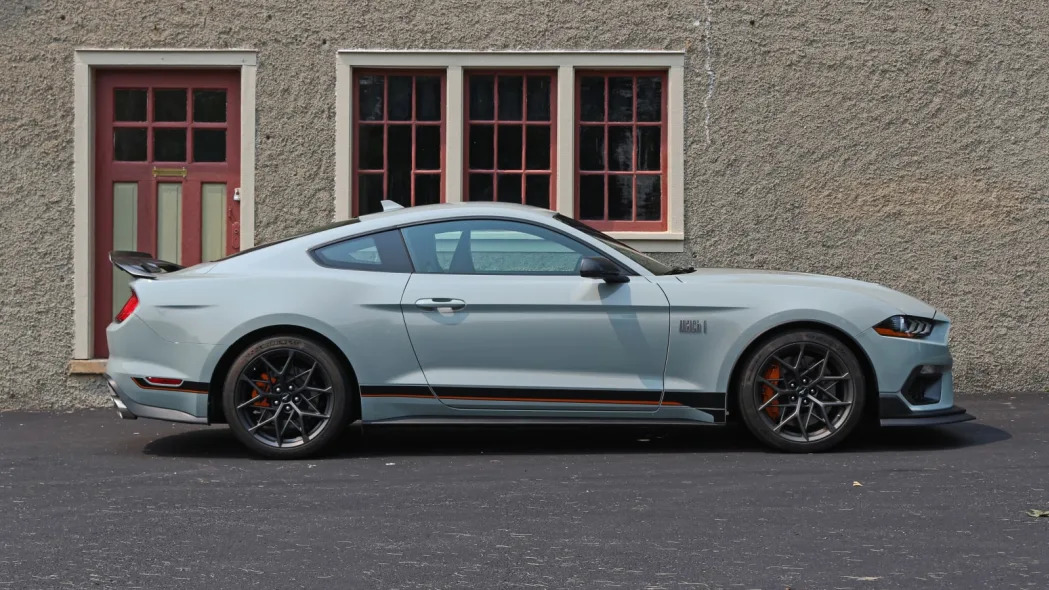
Find a smooth, dry road, though, and it’s a whole different ballgame. Those Sport Cup 2s check in at 305/30R19 up front and 315/30R19 out back. That is a lot of tire, which translates to nearly endless grip. In addition to the handling package, my tester also had the (inexpensive, at $275) rear-seat delete option. This doesn’t really pull a ton of weight out of the car, but the reduced mass in the back half of the cabin seems to result in a bit more noise. It’s not intrusive per se; in fact, it can make the car feel a bit more raw and communicative.
That brings a bit more immediacy to the suspension’s darty shenanigans as it hunts around dips and bumps, tripping over its too-large feet like a Bloodhound puppy following an elusive scent. That’s the sort of tradeoff we’re often willing to make for a performance car, especially when equipped with a dedicated track package (think Porsche 911 GT3 RS).
That’s what the Mach 1 is, at least to a degree. A toy is a toy, after all, but those with Mustang budgets are likely going to expect something a bit more flexible. With some extra investment (maybe a set of less-aggressive tires strictly for street use, perhaps on narrower wheels), this would probably make for a far more livable on-road experience.
But a fixed suspension is a lot cheaper to purchase and maintain than something this complex, especially if the resulting experience is still so heavily canted toward performance. In other words, if you’re going to spend a bunch of money to make a Mach 1 daily-driver friendly, why not just buy a cheaper GT and spend the extra on track-focused items?
It’s not all bad news, though. The tuned-up 5.0-liter V8 takes to the Tremec TR-6060 six-speed beautifully, and while it’s no replacement for the GT350's 5.2-liter, flat-plane-crank Voodoo V8, it’s still an absolute gem, just as it was back in 2014 when it debuted with “only” 435 horsepower. But if the howl (and, you know, the performance) of a high-revving V8 is all you want, you can get the 5.0 in a run-of-the-mill GT – and for a lot less money.
Right, money. Let’s talk about that. My test vehicle, with its leather-wrapped Premium interior and Recaro seats, came to about $64,000 – not quite GT350R money, but about $10,000 more than a 5.0-liter GT model with the equivalent interior, Performance package and MagneRide stand-alone option (which, not-so-coincidentally, is roughly the same price as a zero-option Mach 1).
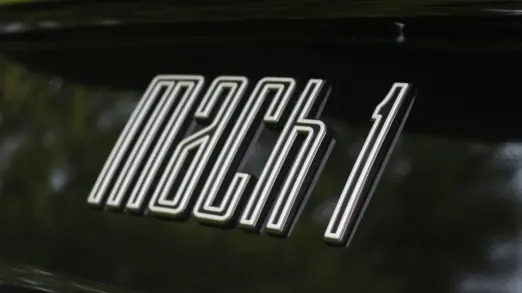

Mach 1 No. 2: 10-speed auto, standard seats
Riswick: I would love to say that a less hardcore Mach 1 is a more agreeable Mach 1, but I just can't. The less aggressive summer rubber may not adhere so strictly to terrible pavement. The back seat, which existed in my car, may soak up some road noise while also providing a place for a pair of small dogs to sit. The standard seats up front may adjust in more ways than the six-way manual Recaros, while also being cushier. The 10-speed automatic may make it easier to drive in traffic and will return better fuel economy. This car was also $4,000 cheaper.
Alas, I was just as disappointed by the Mach 1 as Mr. Hurd was in Michigan. While he looked to rekindle some of the magic he enjoyed with the GT350, my Mach 1 had to live up to the rose-tinted aviators through which I viewed the beloved Mustang Bullitt. I actually dubbed it "the perfect Mustang."
MagneRide was a big part of my affection for that car (it was an option on it), but unlike in the Mach 1, its placement in the Bullitt actually resulted in a perfectly livable ride on the pock-market streets of my neighborhood in Portland. Road trip? No problem, it was a grand tourer I'd happily drive anywhere for any distance. The Mach 1, on the other hand, uncouthly clattered and banged down the road even in Comfort. It improved dramatically out on the open road, but getting there got old.
And here's the very important thing: Such a beat-you-up ride quality would be fine if it's paired to athletic reflexes and road-carving talents, but the Mach 1 fell flat there, too. Byron noted that his car felt like it was "tripping over its too-large feet" and my car mirrored that exactly, especially as it was wearing different shoes. It feels really big, and there's a general lack of precision and communication given the speeds that are possible. Particularly with the steering, it all falls short of providing the type of confidence you expect from a high-powered sport coupe. There's an uncontrollable beast feel to it, as if one errant toe wiggle will smoke the tires. That can be fun, but it's also incongruous with the Mach 1's goal of being an all-around performance machine.
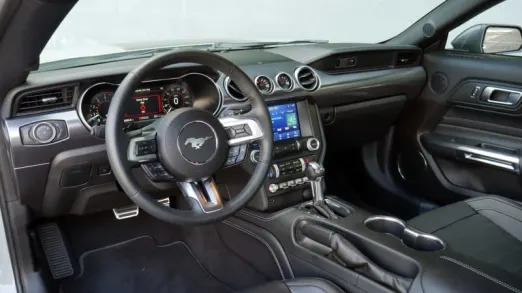

I also don't remember that same feeling with the GT350 – it may have been years rather than months since I drove that, but I distinctly remember that car feeling like a prototype Ford sports car that was being disguised by a Mustang body. It looked like a muscle car, but didn't drive like one. The Mach 1 does, yet doesn't have the well-rounded drivability that usually goes with it. Basically, worst of both worlds.
True, the Bullitt and its GT Performance package suspension would've been even less precise and confidence inspiring on the same mountain road test route, but it wasn't intended to clear the same dynamic bar as the Mach 1. It was also more comfortable, and if I may make an aesthetic judgment, far classier in appearance.
Now, let's touch on some of the differences in "my" Mach 1. First the standard seats. They are six-way power adjustable, with recline annoyingly maintaining a manual adjustment (I suspect this is for quick back-seat access). The key adjustment difference, though, between the two seat options is the front-of-seat tilt, which is most beneficial for tall folks like myself. Indeed, it's easier for me to find a comfortable seating position with the standard seats, which applies to every Mustang, not just the Mach 1. The first few minutes in them should also have you leaning in their direction as they are noticeably squishier. Yet, as time and miles wore on, they once again prove that squishiness does not equal support, both in terms of long-distance and cornering. In the end, the answer is the Mustang doesn't actually offer a good seat option.
As for the 10-speed automatic, it's a perfectly acceptable transmission. It glides through gear changes like butter, which is good since it makes so many while getting up to speed (the ratios are changed from duty in the GT). The smoothness of its uninterrupted momentum is almost reminiscent of a CVT, which I mean in a good way. Its downshifting reactions to your right foot are also perfectly acceptable in a performance application. That said, get the manual. It even has a cue ball shifter like the Mustang Bullitt. Actually, just find a Mustang Bullitt somewhere before they're priced to infinity. Or a GT350. Either way, you'll end up with a better Mustang than the spork-like Mach 1.
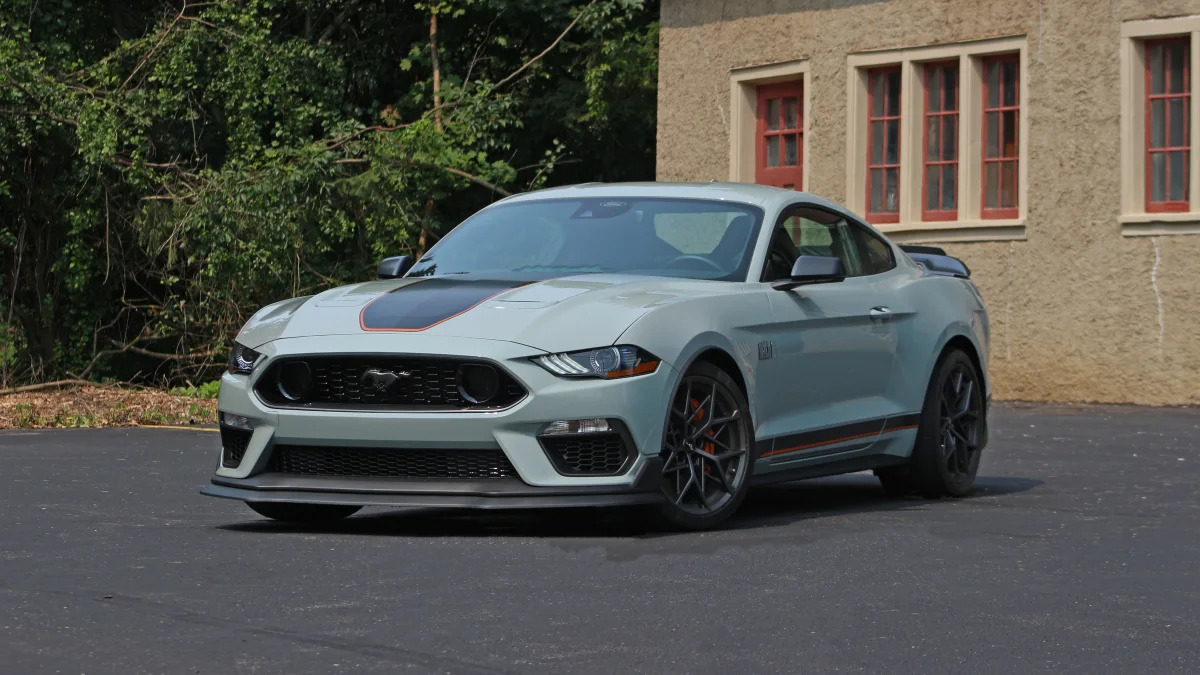










Sign in to post
Please sign in to leave a comment.
Continue